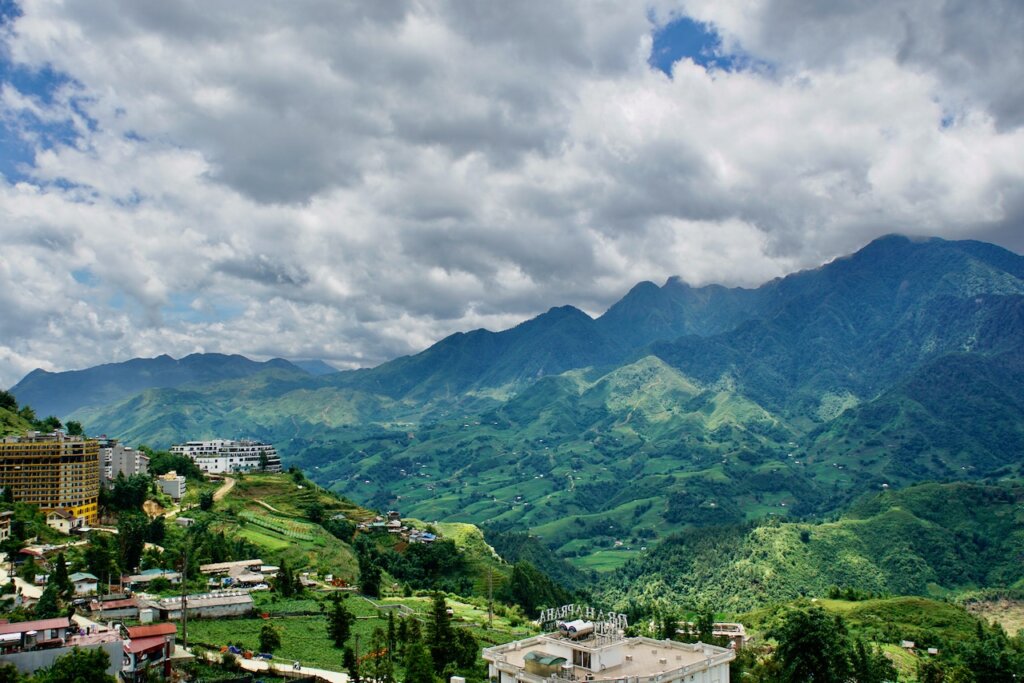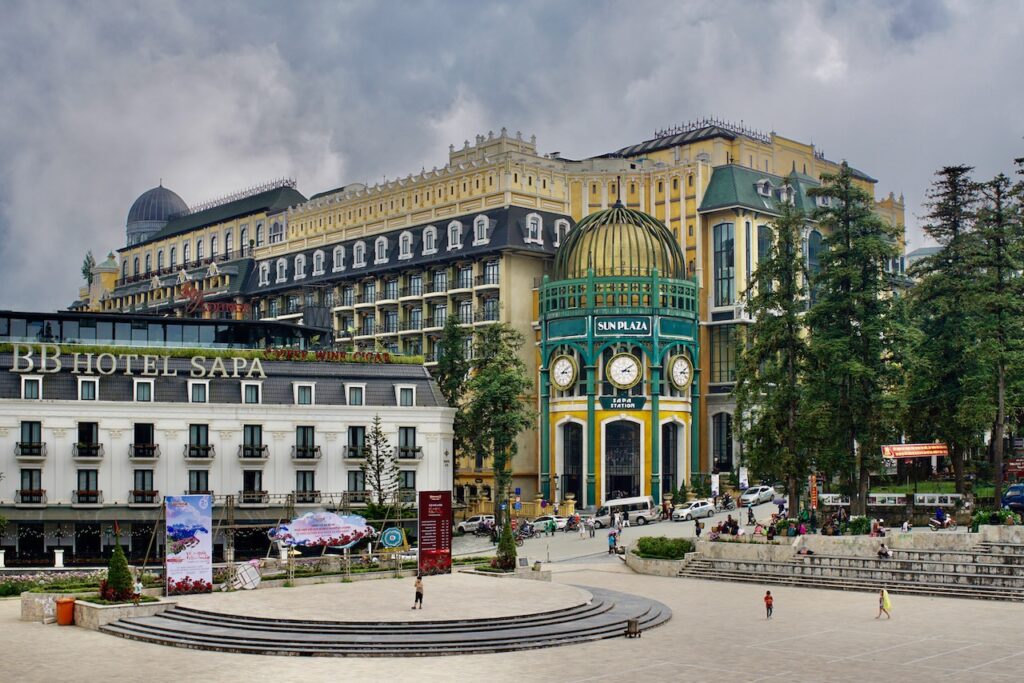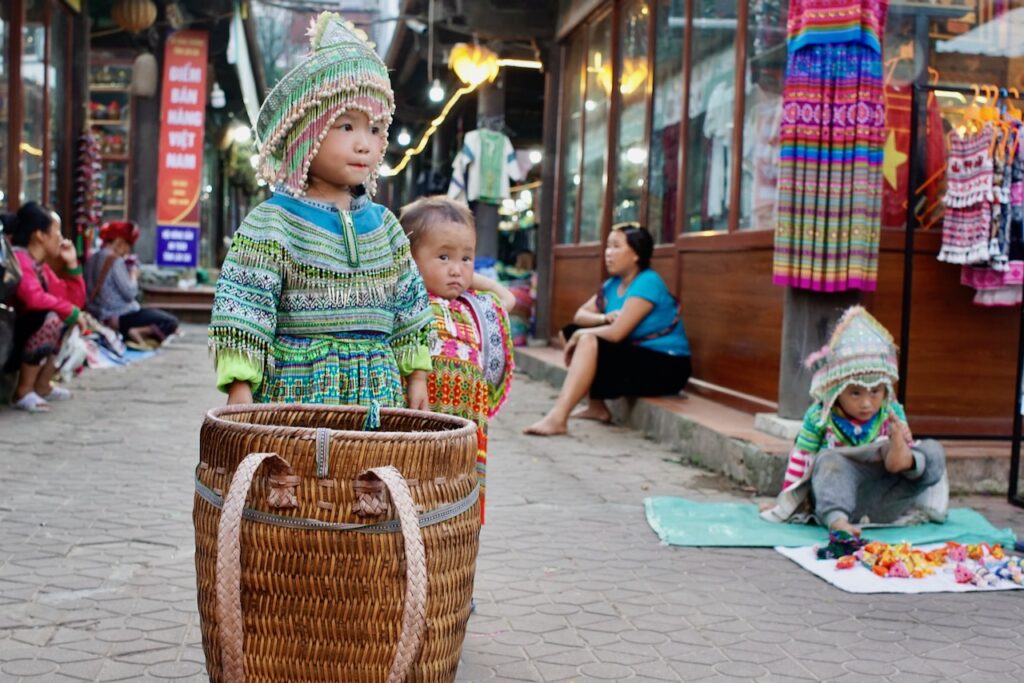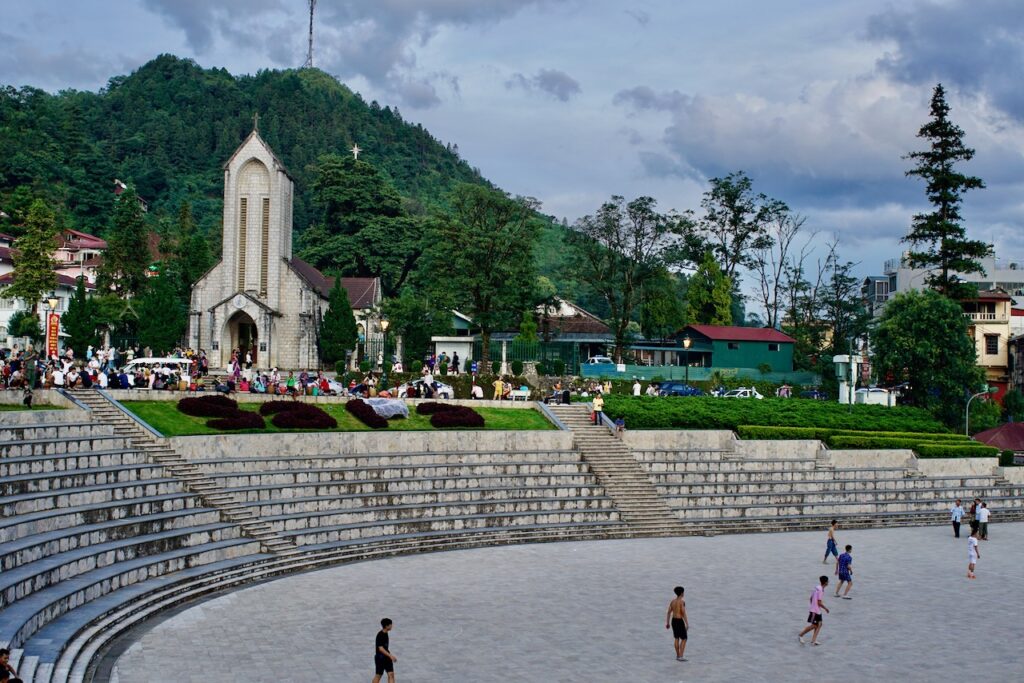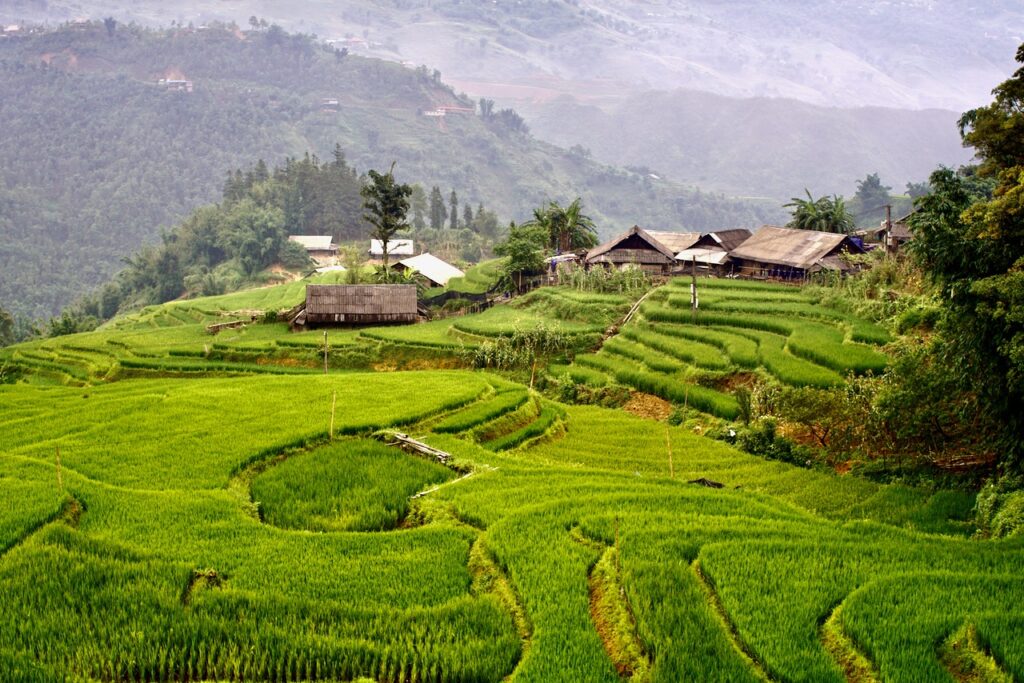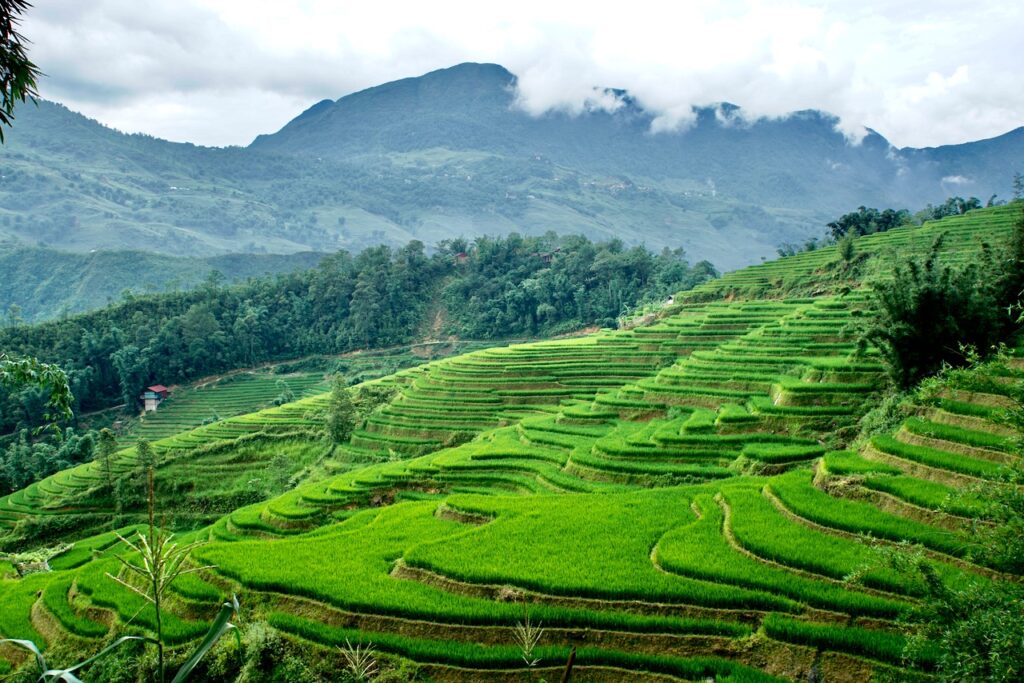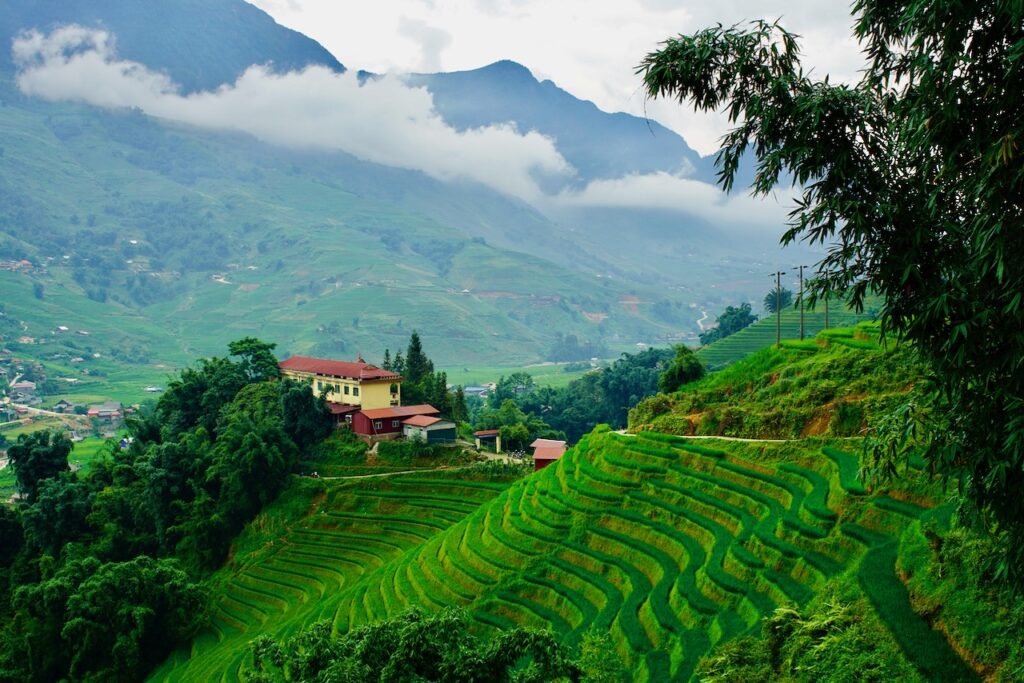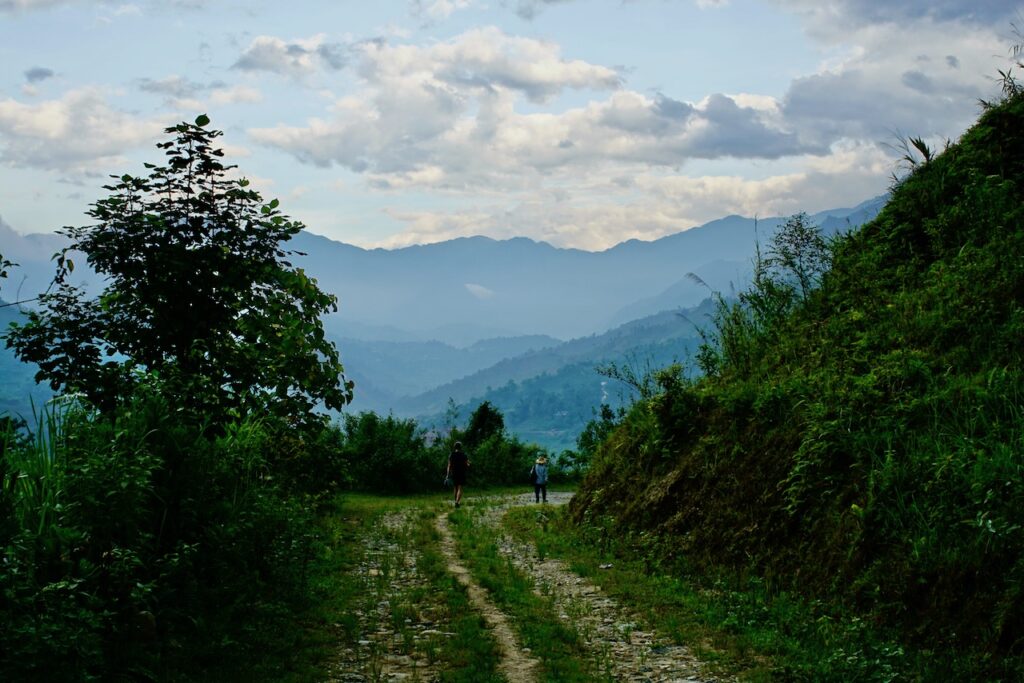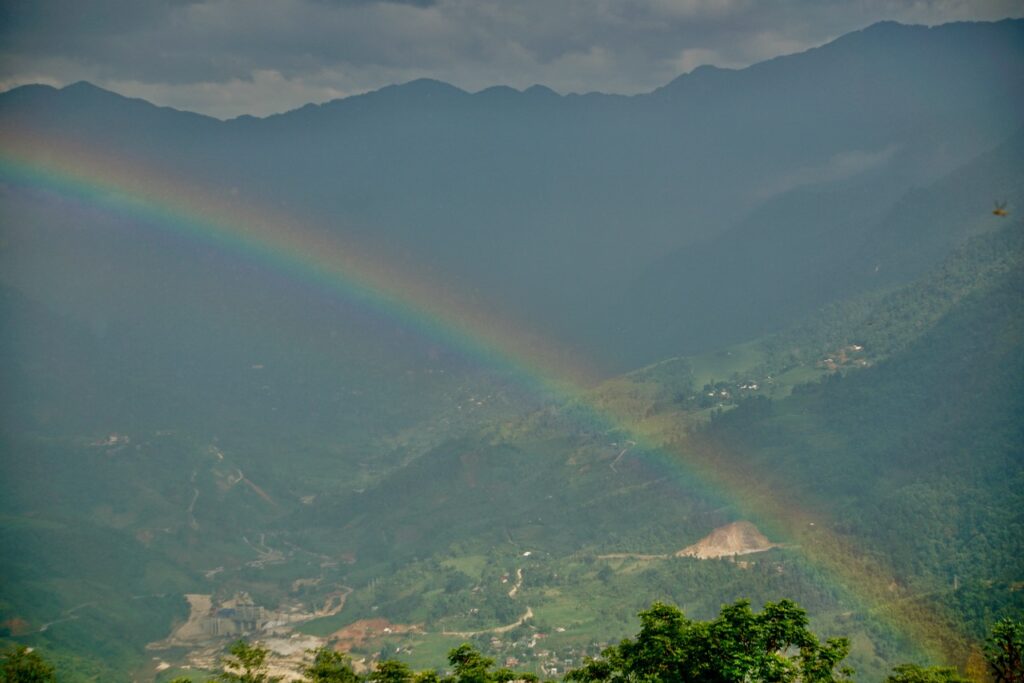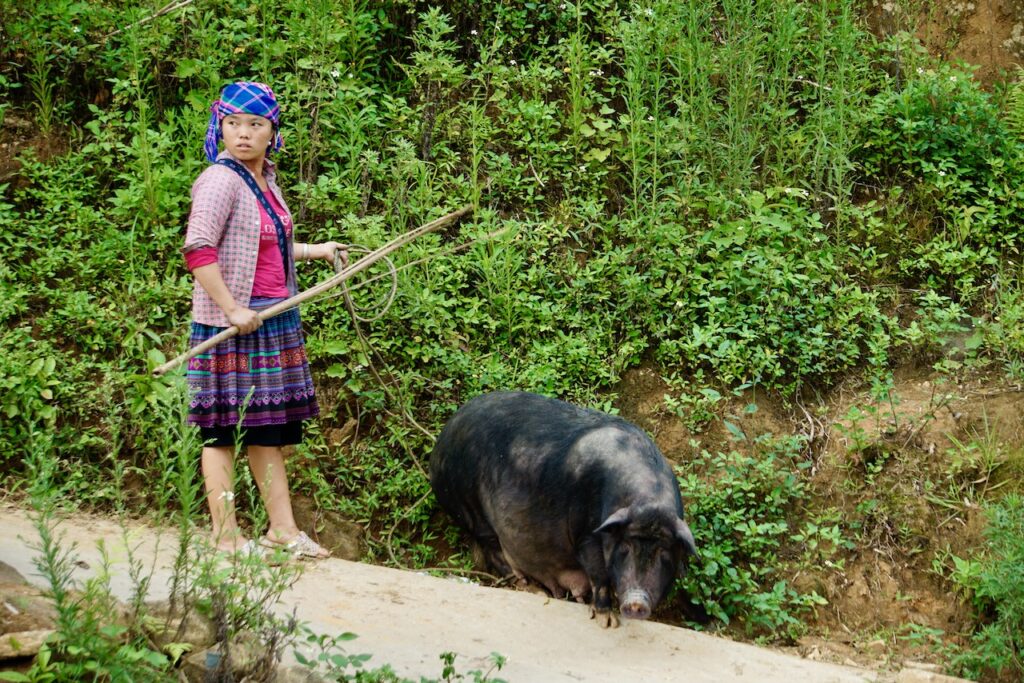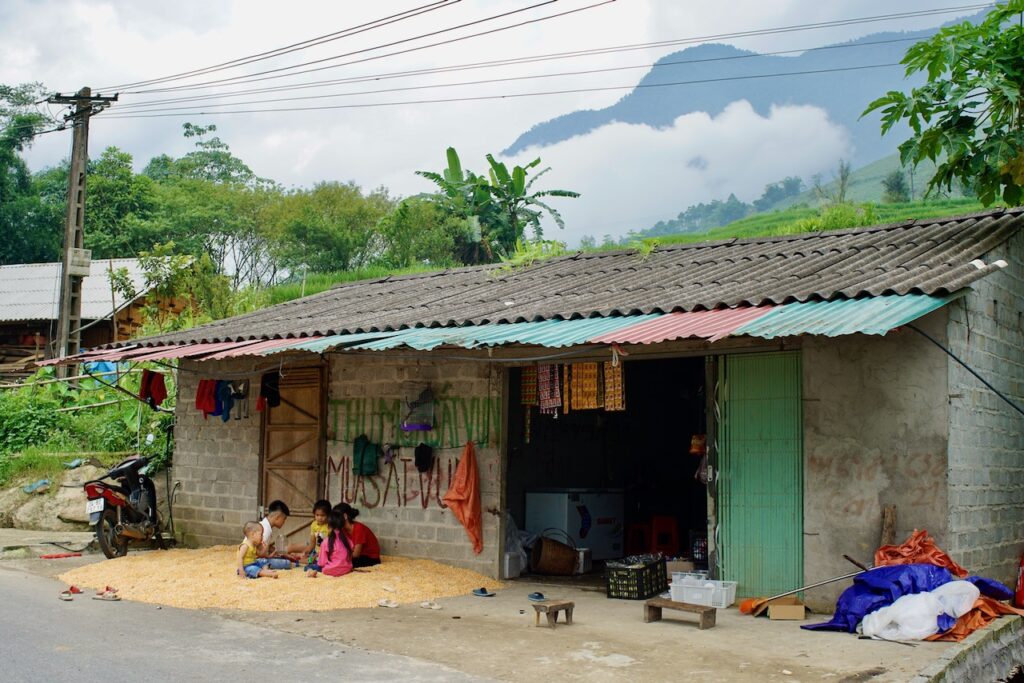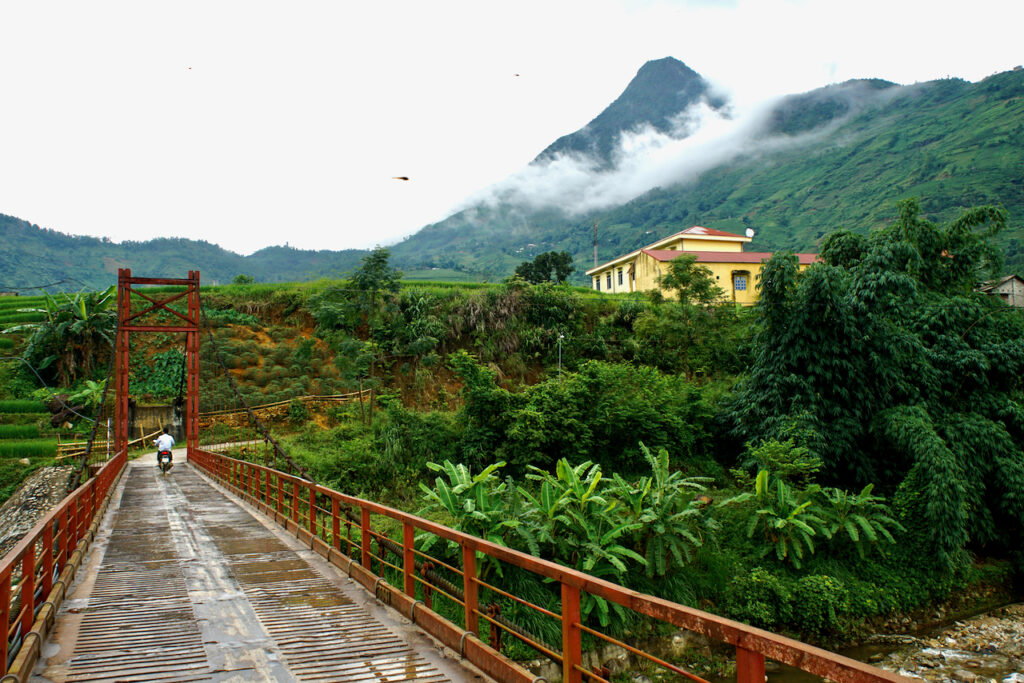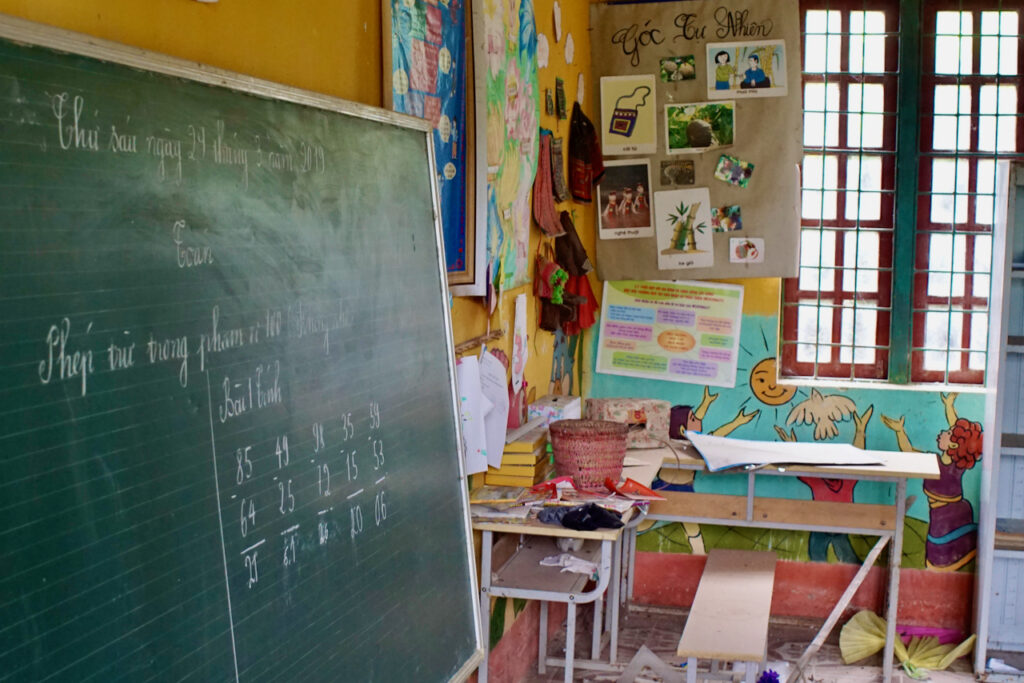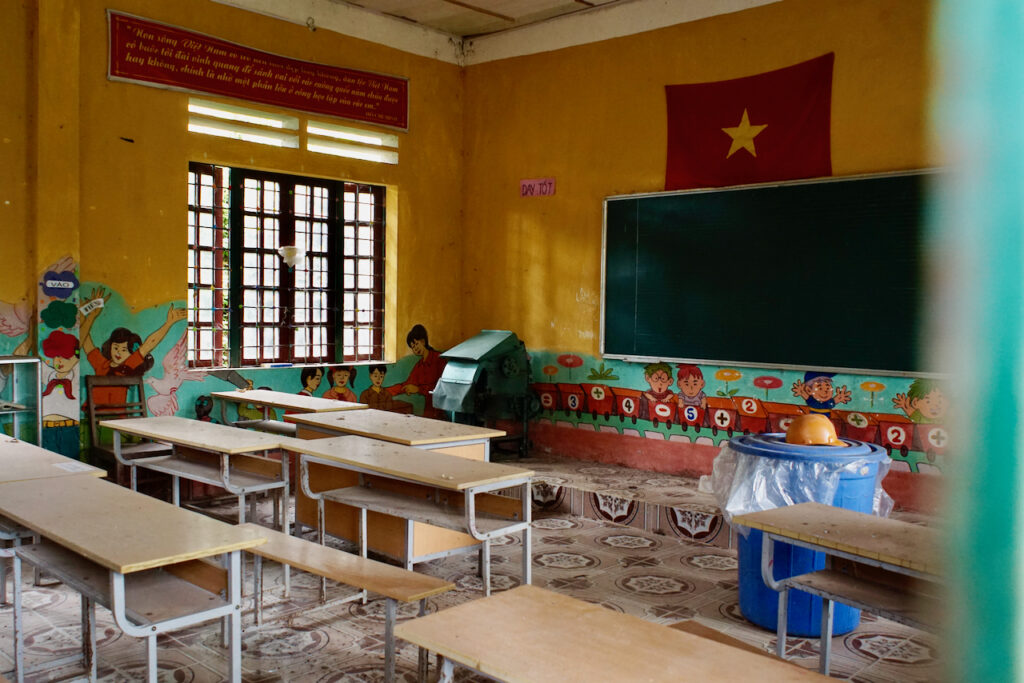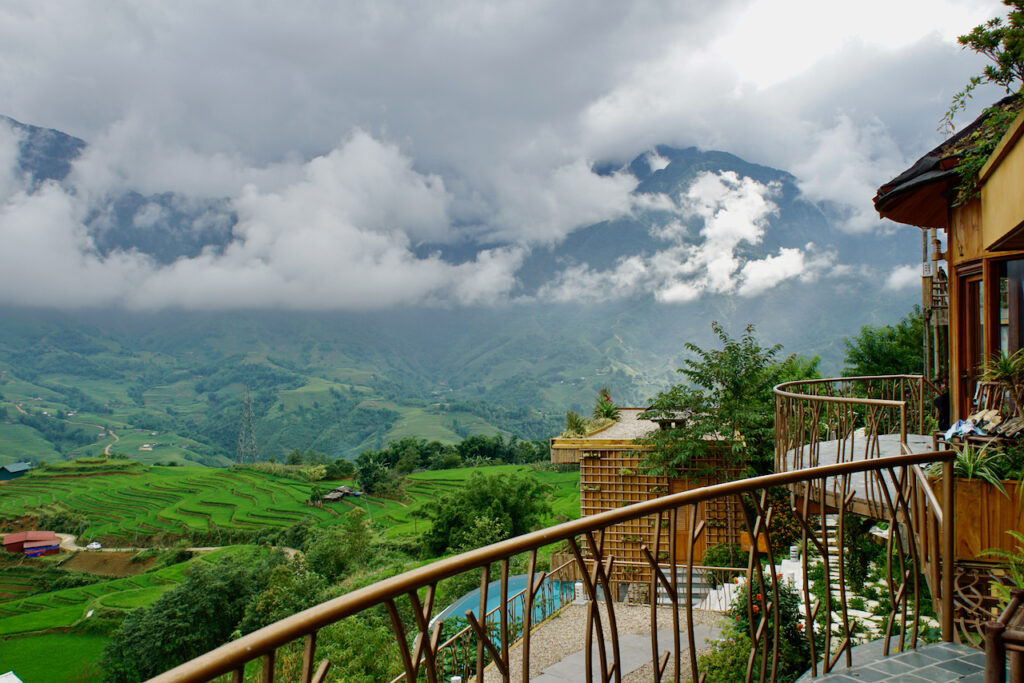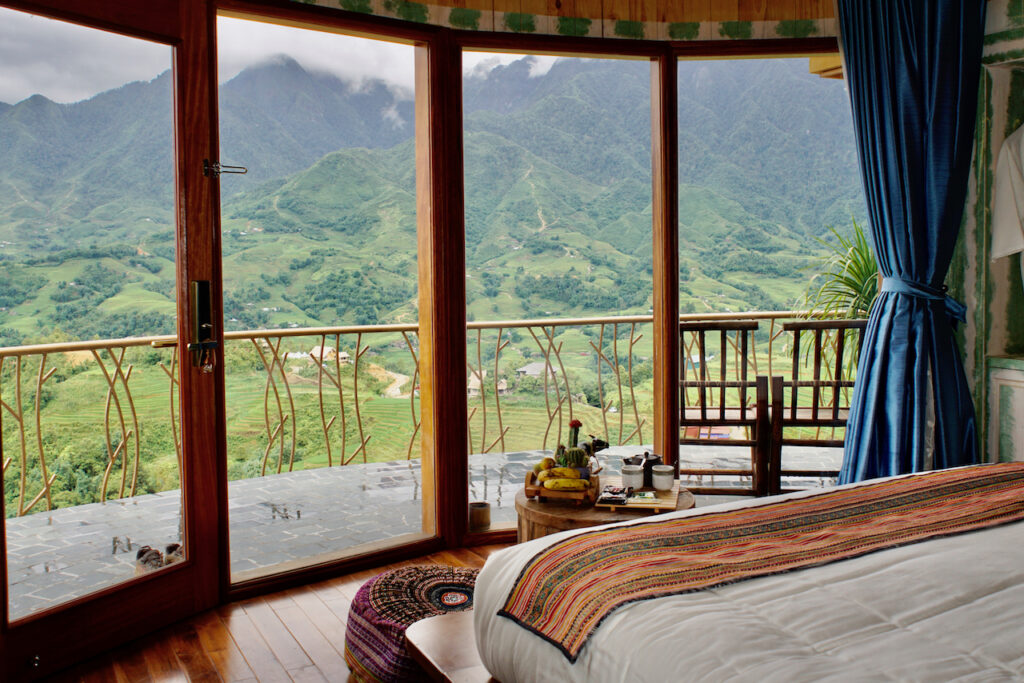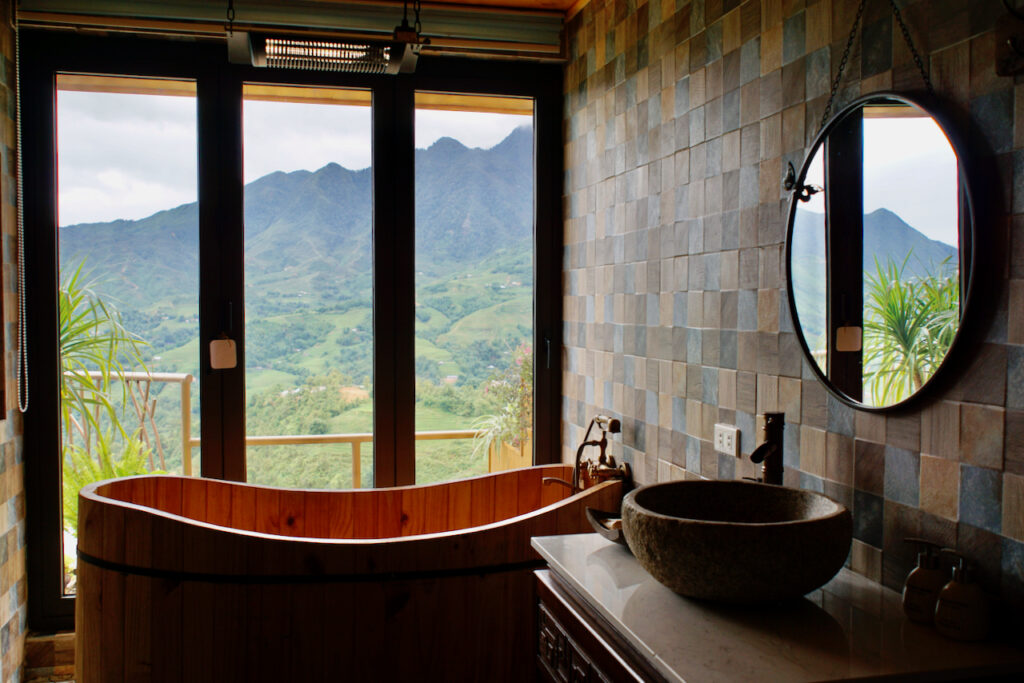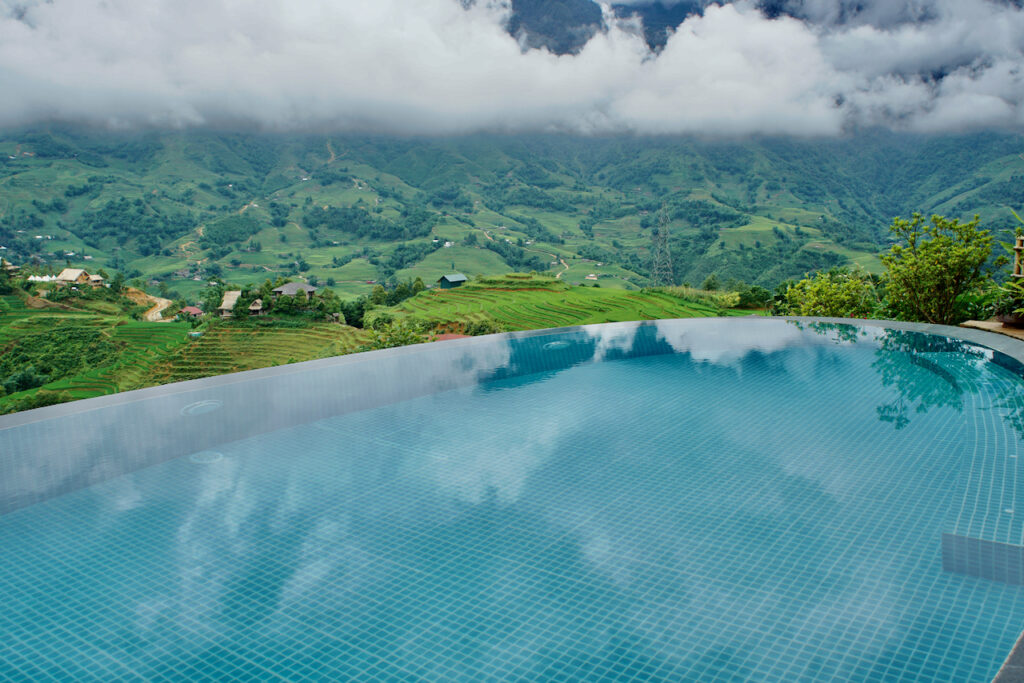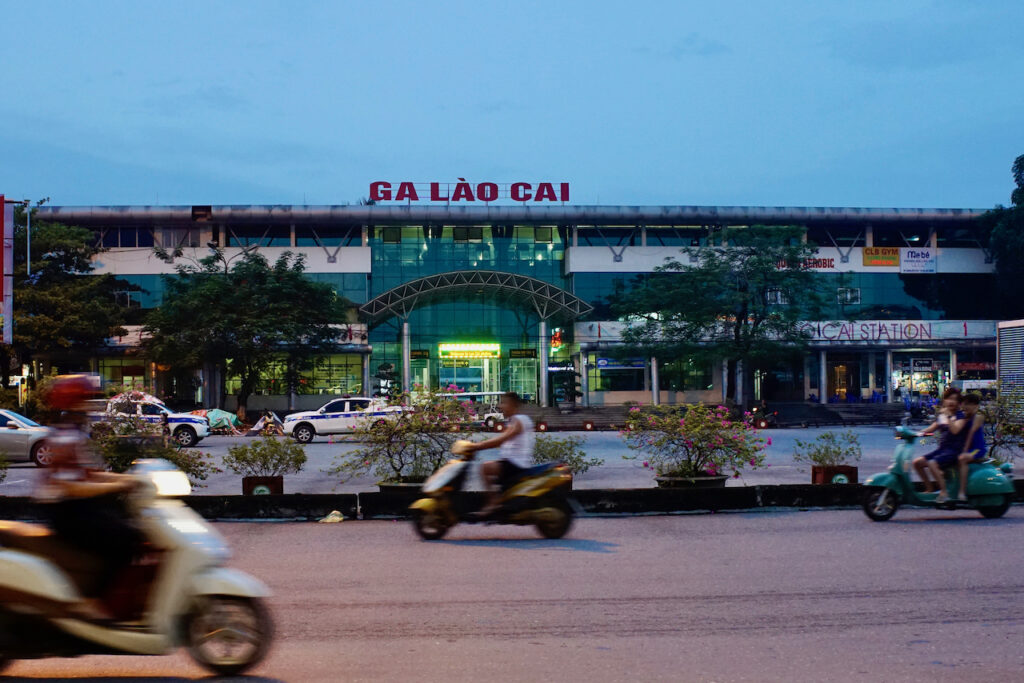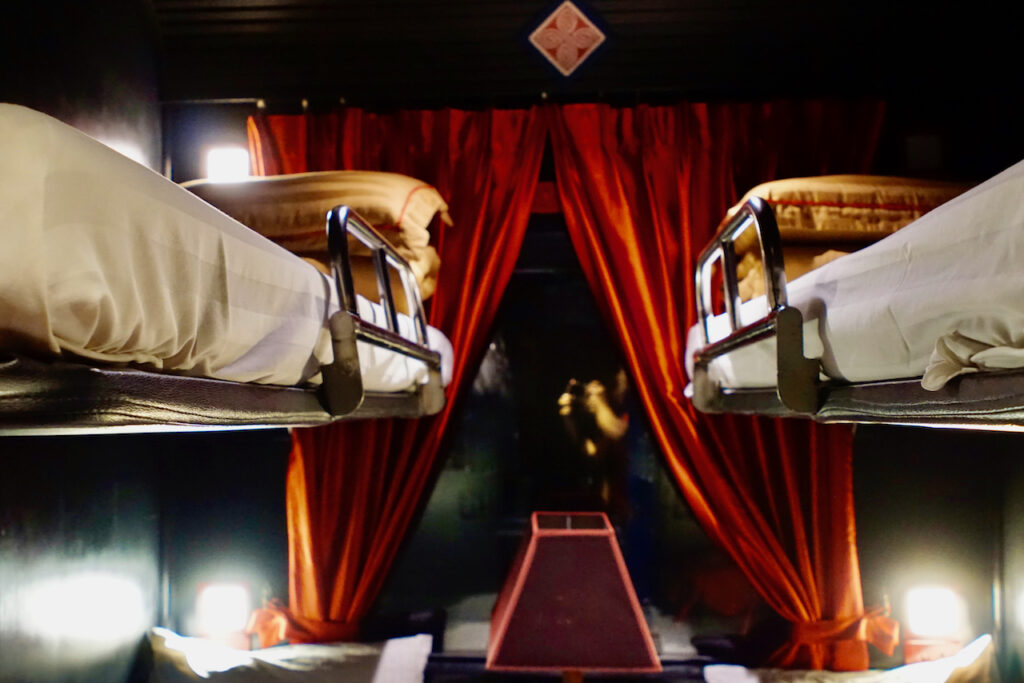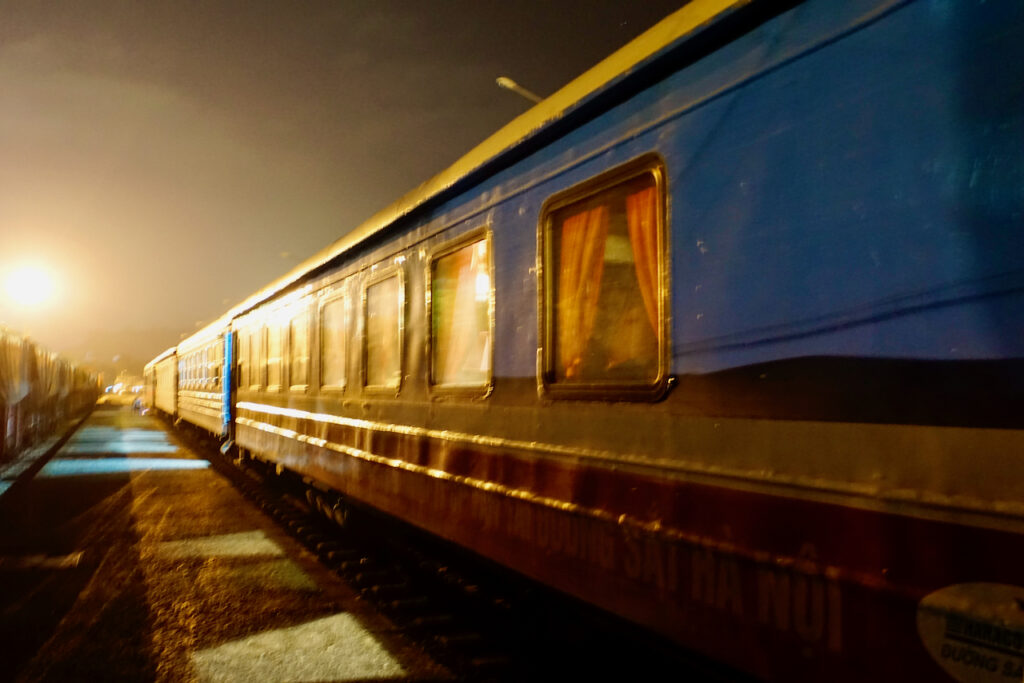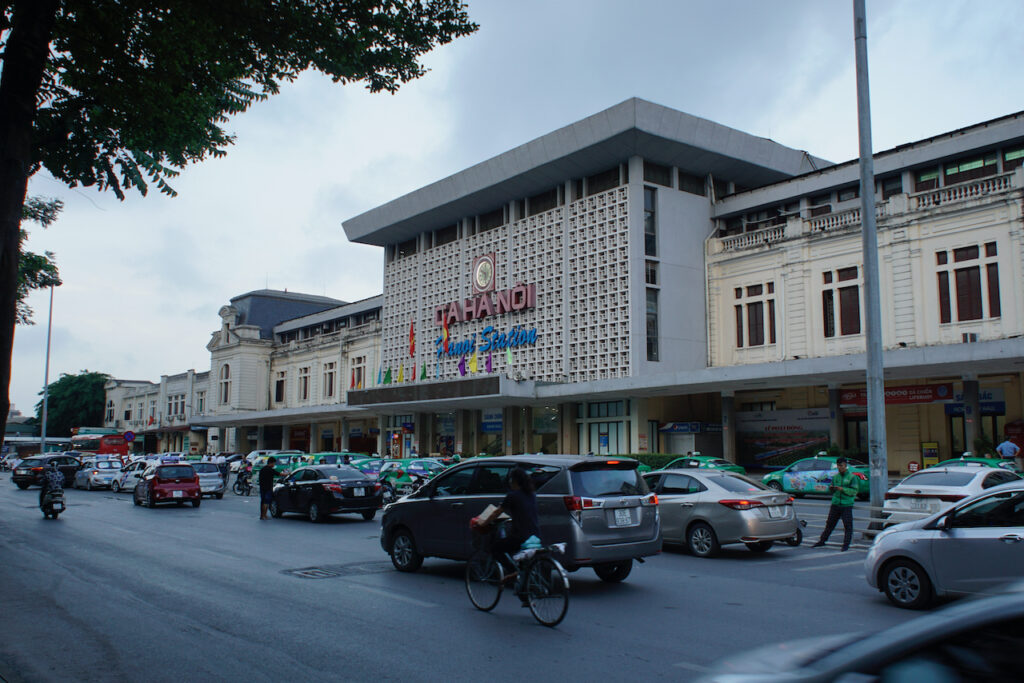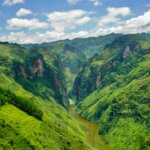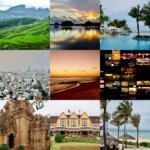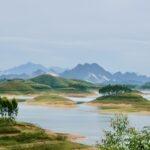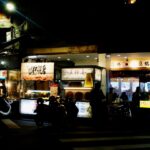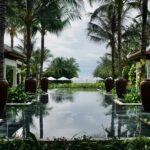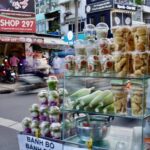After a breathtaking five-day tour of Ha Giang, our journey through Northern Vietnam continued in Sapa. We would do some hiking with Sapa O’Chau, followed by some much-needed R&R at Sapa Clay House.
Night Bus Ride from Ha Giang to Sapa
We boarded a rather uncomfortable night bus in Ha Giang around 8pm, and it led us to Sapa in the wee hours of the morning. The ride was nauseating. To avoid tolls, the driver took mountainous roads. The ride was also loud because a few fellow passengers had no concept of inside/night voice.
The bus pulled into Sapa Bus Station sometime around 4am, and the passengers were allowed to just keep sleeping. We woke up around 6am, feeling hot and incredibly uncomfortable. In the dark, we stepped over sleeping passengers, found our luggage, and managed to find a cab in the pouring rain that took us to our hotel.
Day 1: Sapa Town Wandering
I had booked us a rest day at My Boutique Hotel Sapa. This was much-needed before we head off on a 3-day trek with Sapa O’Chau. We spent the day relaxing and wandering a bit. Sapa town is typical of fast and unplanned tourism growth. The view of Fansipan, Vietnam’s highest peak, felt underwhelming after the untouched natural beauty in Ha Giang.
This tourism-driven town has been hit hard by COVID. Many businesses shuttered, and we were often the only patrons in restaurants. An air of desperation and sadness lingers in the air. Most unsettling is all of the ethnic minority children roaming the streets selling souvenirs. Many children were carrying babies. The stark inequality juxtaposes Vietnamese tourists is striking and disheartening.
Day 2: Sapa O’Chau Trek
After a hearty breakfast, we checked out of our hotel and met up with our guide from Sapa O’Chau to begin our 3-day trek in the Muong Hoa valley. Funny coincidence – the concierge from the hotel is our tour guide’s sister! The tourism industry really is the main staple here. We had been recommended to Sapa O’Chau for their sustainable tourism work in the region. We’re happy to support them since business had been much slower due to COVID.
We met at Sapa O’Chau office and dropped off our luggage, taking only what we needed for the 3-day hike. The hike began by heading out of Sapa town and traversing through the touristy village of Cat Cat, where photo ops were aplenty for Vietnamese tourists. Our guide asked why Westerners like to go quiet places and don’t take many photos of themselves. We said the ones who do so don’t come here but rest assured, many Western selfie-loving tourists exist.
On our way out of town, two ladies in their traditional outfits followed, serving as guides in tricky bits of the trek. When we reached our lunch spot, some 10km later, they took out handicrafts they’ve been carrying. We bought one thing from each, impressed at the incredible length they went to sell their goods.
We hiked 14km in total throughout our first day, crossing Lao Chai village and reaching Ta Van, where we spend the night at a homestay. Breathtaking views of rice terraces were ubiquitous. Many of the fields have been constructed over a century ago.
The terraces are shaped to maintain water in the soil along the slopes, which is vital to prevent bugs from eating the rice plant’s roots. We learned that the rice here mostly isn’t for sale. Families farm them to feed throughout the year.
Day 3: Sapa O’Chau Trek
When I woke and saw rain, I dreaded the 15km hike ahead. Fortunately, the weather was on our side, and the sun emerged shorter after we began the trek.
The hike was harder today. Our backpacks felt heavier than the day prior. The terrains were muddy and challenging. It was one of those days where I was squarely outside of my comfort zone all day. I focused on putting one foot ahead of another. I paid attention to the little things – the incredible butterfly, the village lady pushing her pig along the road, the kids playing in a pile of corn. A rainbow appeared after an afternoon drizzle.
We arrived at our homestay in Ban Ho just before the evening rain. Our hospitable family fed us fish from the pond, cooked over an open fire, along with a spread of other vegetables from the garden. Farm to table can be so simple!
Day 4: Sapa O’Chau Trek
The final day of the trek was a relatively easy 6km walk. We didn’t even need to carry our backpacks because we returned to the same homestay for lunch!
We strolled around the village of Ban Den and observed everyday lives going about, then hiked up to Nam Toong, where we saw a lovely schoolhouse that was closed last year due to low attendance.
The classroom still has a blackboard with beautifully written math lessons from March 29th, 2019. The exterior walls had vibrant murals that depict the unique lives of ethnic minorities in the area. Curious how long this time capsule will last.
After lunch, we bid farewell to our lovely homestay host and headed back to Sapa in the car. Three days of the hike were completed in an hour-long drive. We did feel a certain sense of accomplishment!
Very glad to have included Sapa O’Chau in our journey and contributed toward community development in a small way. The homestay experiences were authentic, and our guide, a Hmong minority from Ta Van village, was most helpful!
Tip: If you are short on time, I would simply do the two-day/one-night hike through Sapa. Most of the spectacular views took place during those first two days.
Day 5-6: Pure Relaxation at Sapa Clayhouse
After concluding our trek, we checked into Sapa Clayhouse for some much-needed relaxation and recovery. This small cottage located just 3km outside of Sapa town totally blew us away!
The family-run retreat provided unobstructed views of the Sapa mountains. It shielded us from both the bustling town and the village’s noises (roosters, children, karaoke). After staying with various homestay for the past week, between our Ha Giang and Sapa trek, this cottage hotel felt like a five-star resort but full of community charm.
The level of quietness and greenery is so rare for us Saigon-dwellers that we’ve been in-awe since check-in! I went for a 5k run today in the open air, another activity that I haven’t attempted in Saigon.
Savoring each moment here and holding immense gratitude for this opportunity to travel and experience beauty and peace.
Day 7: Overnight Train from Sapa to Hanoi
We spent our final day in Sapa lounging around Sapa Clayhouse, soaking up all the view in between shrouds of clouds & rain. The less-than-stellar weather gave us an excuse to snuggle in bed, practice yoga, and catch up on journaling from our cozy room – a perfectly restorative day.
Around 5pm, we boarded a bus headed to Lao Cai to catch an overnight train to Hanoi. This is our first sleeper train since the epic Trans-Siberian journey two years ago. We got to the station with some time to kill, so we had a drink at a café bar across from the station. It had very French train station vibes.
We had booked our tickets via Sapa O’Chau, and were delighted to see the deluxe train cart run by Chapa Express Train! Reluctantly, we bid farewell to Sapa and Ha Giang, to both the magnificent scenery and cool weather.
Costs and Final Thoughts
- The 3-day Muong Hoa trek with Sapa O’Chau was US$117 per person, including all the meals and our guide. Sapa O’Chau also arranged the bus transfers from Sapa to Lao Cai train station for US$3/person, and the 10 pm train from Lao Cai to Hanoi on the Chapa Express train for US$35 per person. The organization and communication with Sapa O’Chau were fantastic, and I highly recommend working with them if you visit Sapa.
- Sapa has no shortage of resorts and getaways. We chose Sapa Clayhouse for its location outside of Sapa town and the small family-run property. Two nights at their deluxe second-floor room with an unobstructed view cost $225 total, including delicious breakfast spreads. The property has an incredible infinity pool, but the water was so cold during our visit that we didn’t stay long. There aren’t many restaurants nearby, but we ate every meal at the hotel because the food was so fresh and delicious!
- I would limit my stay in Sapa town and spend more time in the many eco-friendly homestay and boutique hotels across the Muong Hoa valley. Our 24-hour stay in the city was more than enough. It was a necessary break between the journeys, but I also could have done without and stay outside of town instead. Like many towns that rely on tourism, tourist traps are aplenty in Sapa Town. Beware and go out of the busy city for a unique and memorable experience!

